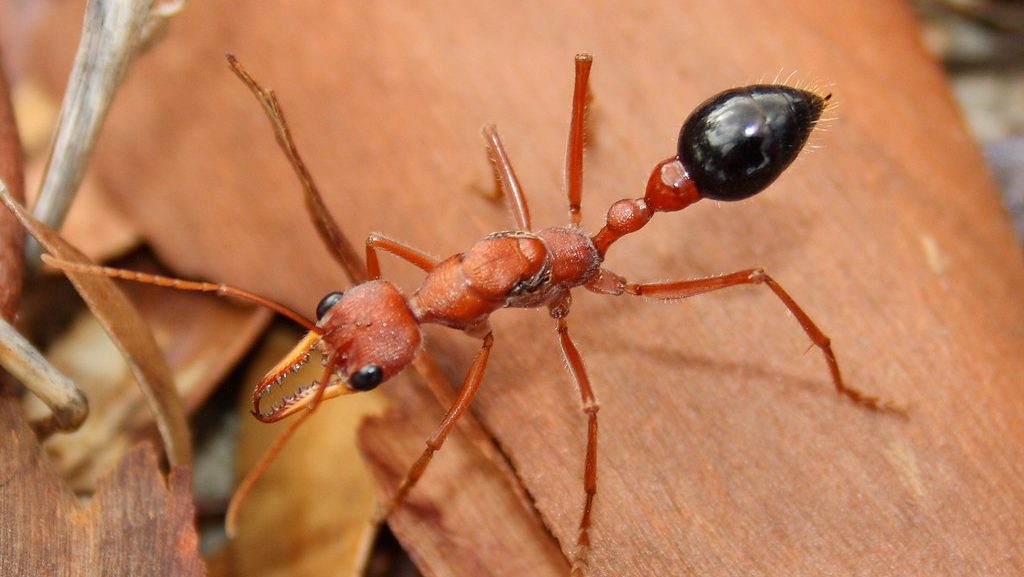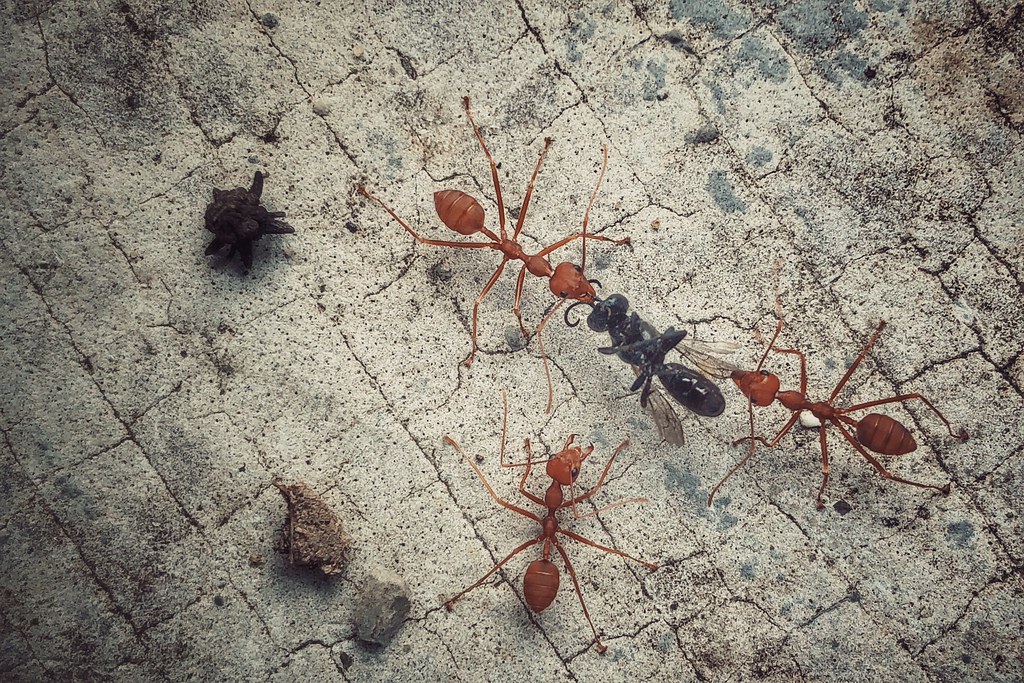Key Takeaways
-
Diverse Diet: Fire ants are omnivores, feeding on insects, small animals, carrion, seeds, fruits, nectar, and sugary substances like honeydew.
-
Adaptable Foragers: They adjust their foraging behavior based on the environment, food availability, and colony needs.
-
Aggressive Behavior: Fire ants forage aggressively and use pheromone trails to coordinate and maximize food collection efficiency.
-
Food Processing: Workers carry food to the colony, where it’s broken down and shared through trophallaxis to nourish the queen and larvae.
-
Effective Control: Food source management, bait traps, and sealing entry points help in reducing fire ant populations effectively.
-
Misconceptions Clarified: Fire ants don’t only feed on sweets or plants—they need a balanced diet for colony survival.

What Do Fire Ants Eat?
Fire ants consume a wide range of food, from insects and small animals to plant-based materials and sugary substances. Below is a detailed breakdown of their diet.Animal-Based Foods
-
 Insects: Fire ants prey on beetles, caterpillars, crickets, and termites.
Insects: Fire ants prey on beetles, caterpillars, crickets, and termites. -
 Small Vertebrates: They have been known to attack lizards, birds, rodents, and frogs.
Small Vertebrates: They have been known to attack lizards, birds, rodents, and frogs. -
 Carrion: Fire ants scavenge on dead animals, contributing to the decomposition process.
Carrion: Fire ants scavenge on dead animals, contributing to the decomposition process. -
 Eggs: They often raid bird nests or insect egg clusters for protein-rich food.
Eggs: They often raid bird nests or insect egg clusters for protein-rich food.
Plant-Based Foods
-
 Seeds and Grains: Fire ants collect and transport seeds back to their nests.
Seeds and Grains: Fire ants collect and transport seeds back to their nests. -
 Fruits and Vegetables: They feed on soft fruits like berries, melons, and citrus.
Fruits and Vegetables: They feed on soft fruits like berries, melons, and citrus. -
 Sap and Nectar: Fire ants extract plant fluids for carbohydrates and energy.
Sap and Nectar: Fire ants extract plant fluids for carbohydrates and energy.
Honeydew and Sugary Substances
-
 Fire Ants' Preference for Sugar: Fire ants have a strong preference for sugary foods, particularly honeydew, a sticky substance produced by aphids and other sap-feeding insects.
Fire Ants' Preference for Sugar: Fire ants have a strong preference for sugary foods, particularly honeydew, a sticky substance produced by aphids and other sap-feeding insects. -
 Energy Source: This sugary liquid provides fire ants with essential carbohydrates and energy to sustain their colonies.
Energy Source: This sugary liquid provides fire ants with essential carbohydrates and energy to sustain their colonies.
- Honeydew from aphids and mealybugs.
- Spilled sugary drinks, syrups, or food scraps.
- Nectar from flowers.


Not getting a solution?
Get your free pest control estimate today!General Feeding Behavior of Fire Ants
Fire ants are omnivorous, meaning they eat both plant- and animal-based foods. They are opportunistic feeders that adjust their diet depending on food availability. Worker ants leave the nest in search of food, using pheromones to communicate their findings to the colony. Once a food source is identified, they work collectively to transport it back to the nest.Key Aspects of Fire Ant Feeding Behavior
-
Fire ants forage in large numbers and are highly aggressive when securing food sources.
-
They prefer high-protein and fatty foods but will consume a variety of organic matter.
-
Fire ants use their mandibles to break down food and pass it along to the colony.
-
They store food within the colony, feeding larvae and the queen to sustain the nest.
Foraging Behavior of Fire Ants
Fire ants exhibit highly organized foraging behaviour, relying on pheromone trails to coordinate their search for food. Their foraging process begins with scouting, where individual worker ants explore the surroundings to locate potential food sources. Once a food source is discovered, the ants lay down pheromone trails, creating a chemical guide that directs other workers to the site. This leads to mass foraging, where large groups of ants work together to transport food back to the nest efficiently. Fire ants are adaptable foragers, active both during the day and night, adjusting their activity based on environmental conditions to maximize food collection. If you feel things have gone out of control, it is advised to contact pest control professionals. Our team can provide a customized approach to protect your home effectively.
How Fire Ants Process and Share Food
Once fire ants gather food, they transport it back to the colony, where it undergoes further processing.- Worker ants break down solid food into smaller pieces.
- Larvae digest solid food and convert it into liquid, which is then shared with other ants in the colony.
- Trophallaxis, or food-sharing among colony members, ensures that the queen, larvae, and other workers receive nutrients.
How to Control Fire Ants by Targeting Their Diet
Since fire ants rely on diverse food sources, controlling their access to food can help in pest management efforts.Prevention Tips to Keep Fire Ants Away
-
Keep Outdoor Areas Clean: Remove food scraps, fallen fruits, and pet food that may attract fire ants.
-
Manage Insect Populations: Reduce the presence of aphids and mealybugs to limit honeydew availability.
-
Use Fire Ant Baits: Targeted baits mimic their preferred food sources and effectively eliminate colonies.
-
Seal Entry Points: Prevent ants from accessing indoor food sources by sealing cracks and gaps.
Myths vs. Facts: Fire Ants’ Food and Bite
Here are a few myths and facts about fire ants:| Myths | Facts |
|---|---|
| Fire ants only eat plants. | Fire ants are omnivores, feeding on proteins, fats, sugars, and even small animals. |
| They rely solely on sugary foods. | They consume a variety of foods, including dead insects, seeds, and honeydew from aphids. |
| Fire ants bite to inject venom. | Fire ants bite to grip their target, then sting with their abdomen to inject venom. |
| Their stings are harmless and only cause minor irritation. | Their sting contains toxic alkaloids that cause burning pain, allergic reactions, and pustules. |
| Fire ants aggressively attack without reason. | Fire ants attack when their nest is disturbed, defending their colony aggressively. |





